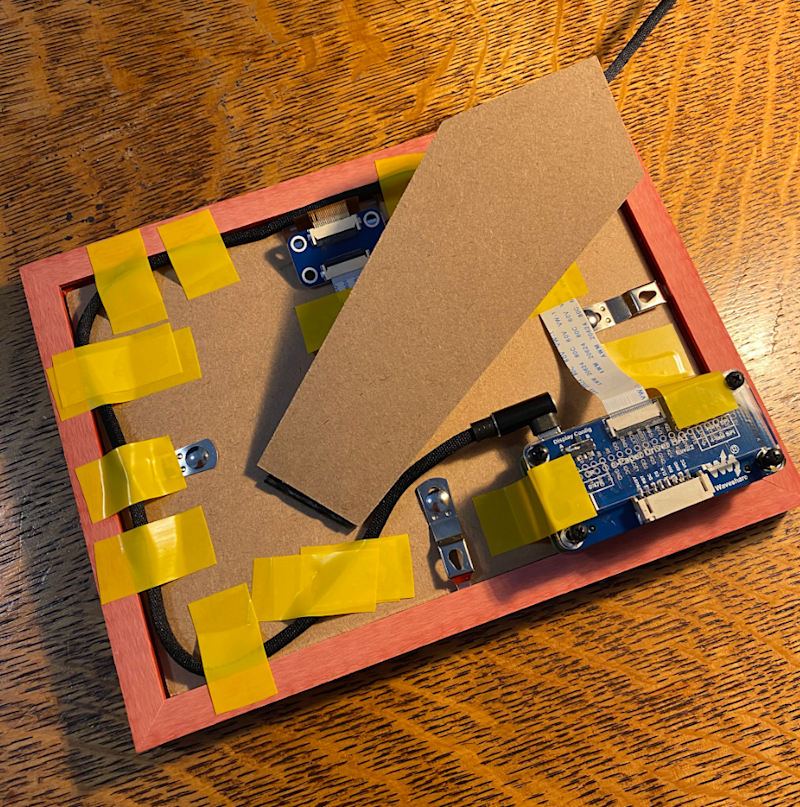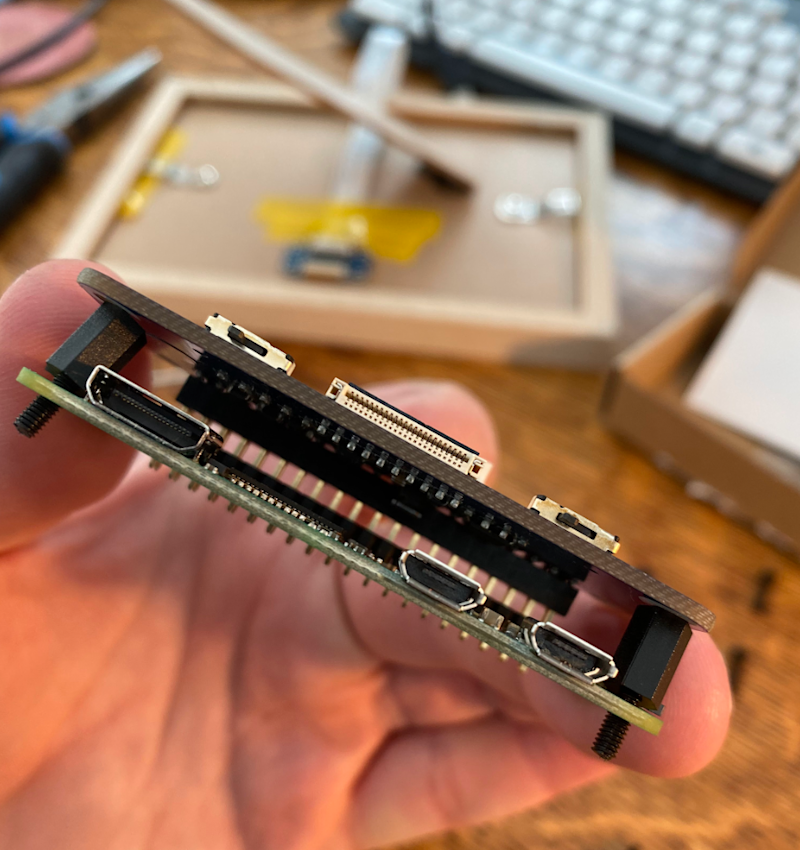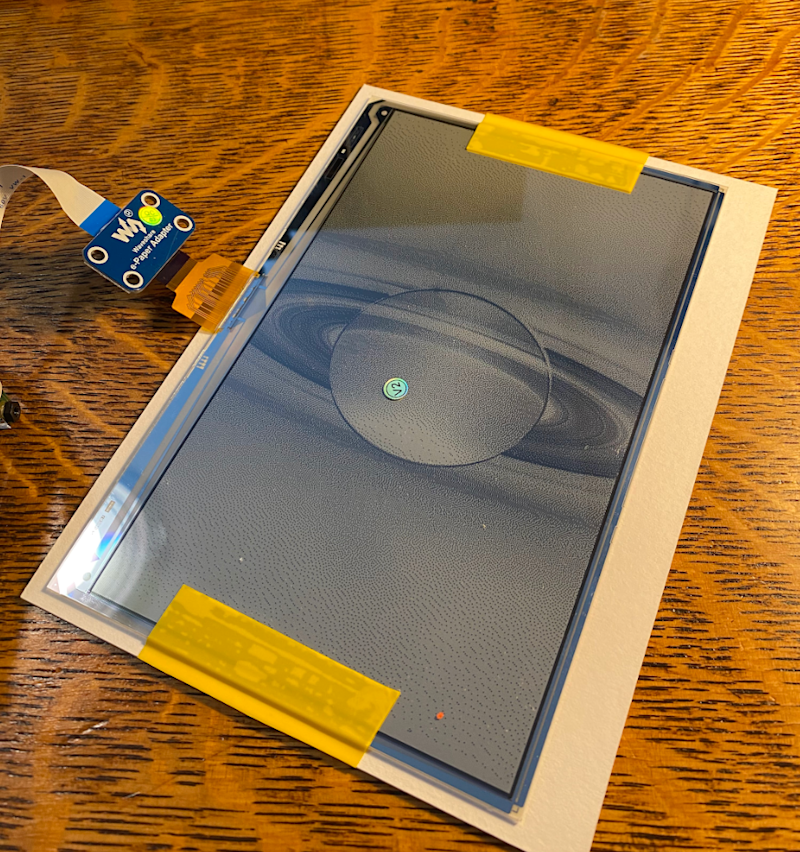She’s the one
The answer, he figured, would be a system that made image-sharing simple, so he came up with the concept for a pair of custom-made digital photo frames that made use of e-ink displays. Although the couple would be limited to sharing black-and-white images, this approach had many benefits, notably low power consumption and simplicity.

“It had to be energy-efficient because Nunavik is mostly powered by diesel that’s brought in by boat,” Olivier says. “It also needed to require very little bandwidth as my fiancée’s internet would probably come from an unstable satellite link. The project had to be easy to use too and required, at most, a couple of seconds to share a picture, much like texting or writing an email. And I didn’t want my fiancée to fuss with a complicated app after completing a night shift and on-call duty.”
With that in mind, Olivier began to plan. A frame would consist of a Raspberry Pi Zero W computer and a 7.5-inch Waveshare e-ink display, and the idea was to allow images to be emailed to a Google inbox with a program written to make use of them at regular intervals.
“I like e-ink technology,” Olivier continues. “Each pixel on an e-ink display hosts tiny pigments that are physically jolted around by an electrical charge and they stay in place even if power is disconnected, which means the screen will continue displaying the same image until it is refreshed.”

Life through a lens
Olivier thought the project would be straightforward. It wasn’t. “I didn’t think writing a script to automatically read attachments from a Gmail inbox would prove so tricky,” he laments. “I definitely underestimated this part of the project because it took me a long time to figure out how a Flash web application written in Python can use and refresh Google authentication tokens.”
He used the industry-standard protocol for authorisation, OAuth 2.0, instead of a simpler email-password login strategy. “It was a way of future-proofing the project because it’s a robust and secure protocol directly supported by Google,” he says. He also added the ability to include custom messages which would be overlaid on to the images. “It was hard to speak on the phone, and internet audio calls were patchy, so I wanted a way to explain the context of each photo,” he adds.

For greater user-friendliness, Olivier created iPhone shortcuts too. “It simplified the process of selecting and emailing a recent image to the dedicated Gmail inbox,” Olivier says. “A click is enough to launch the whole process.” This addition proved an elegant way of stitching together all of the application’s parts and it proved effective.
“My fiancée was delighted when I gave it to her as a Christmas present,” Oliver recalls. “We spent a year swapping pictures to and fro, and I was able to discover the north through her lens as well before flying up to visit her.”








